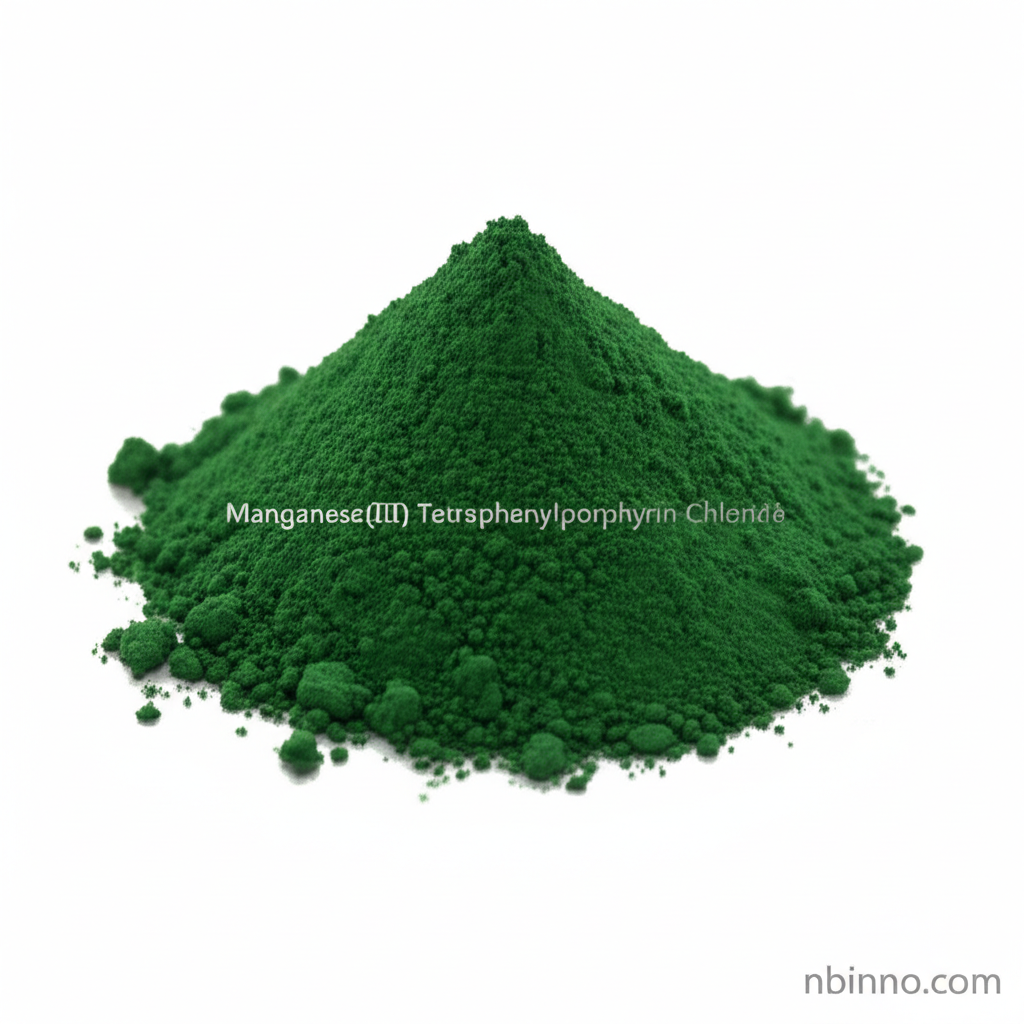Manganese(III) Tetraphenylporphyrin Chloride: Optimizing Cancer Drug Delivery Through Substituent Position and Steric Effects
Unlocking the potential of porphyrins for enhanced cancer therapy by understanding cellular accumulation mechanisms.
Get a Quote & SampleProduct Core Value

Manganese(III) Tetraphenylporphyrin Chloride
This advanced chemical compound serves as a critical component in innovative cancer treatment strategies. Its unique structure allows for targeted delivery and enhanced efficacy, making it a promising candidate for drug delivery systems.
- Optimizing cancer drug delivery systems for cancer therapy through precise control of porphyrin derivatives cancer cell accumulation. This compound's ability to be modulated by substituent position is key to its effectiveness.
- Investigating the impact of steric hindrance in drug delivery systems, revealing how the size and placement of substituents influence uptake. Understanding these factors is vital for developing next-generation therapeutics.
- Leveraging porphyrin-protein binding affinity for enhanced endocytosis-mediated uptake in targeted cancer treatments. This interaction pathway is crucial for efficient drug delivery to malignant cells.
- Enhancing phospholipid bilayer permeability of porphyrins by tailoring substituent position and chain length for improved cellular penetration. This facilitates more effective drug delivery and therapeutic outcomes.
Advantages Provided by the Product
Targeted Cellular Accumulation
The strategic placement of substituents, particularly favoring meso-derivatives over beta-derivatives, significantly boosts the accumulation of these porphyrins within cancer cells, a critical factor in cancer therapy.
Tunable Membrane Permeability
By adjusting the steric hindrance and positioning of chemical groups, researchers can fine-tune the phospholipid bilayer permeability, ensuring efficient entry into target cells, a key aspect of drug delivery systems.
Synergistic Therapeutic Potential
The inherent photosensitive properties combined with drug-carrying capabilities offer a synergistic approach to cancer treatment, potentially enhancing the overall therapeutic outcome.
Key Applications
Photosensitive Drug Applications
This porphyrin derivative can function as a photosensitive drug, activating therapeutic effects upon light exposure, a cornerstone of photodynamic therapy in cancer treatment.
Light Storage and Photoelectric Conversion
Beyond medical uses, its unique photochemical properties make it suitable for applications in light storage technologies and photoelectric conversion, showcasing its versatility in advanced materials.
Advanced Drug Delivery Systems
Its ability to accumulate in cancer cells and be influenced by substituent modifications positions it as a valuable component in developing sophisticated drug delivery systems for targeted cancer therapy.
Research in Organic Chemistry
As a complex organic molecule, it serves as a valuable subject for research in organic chemistry, particularly in understanding structure-activity relationships for medicinal applications.
